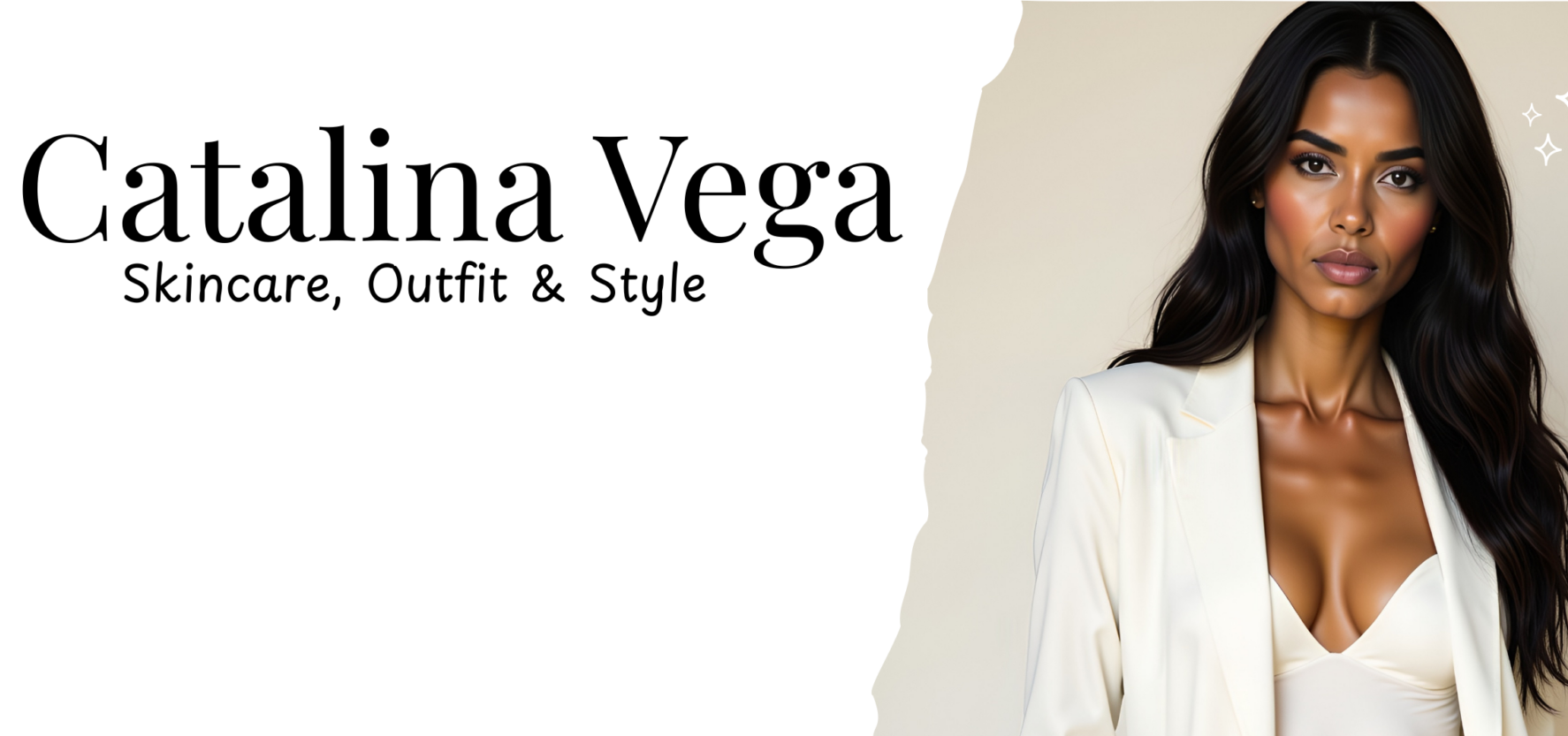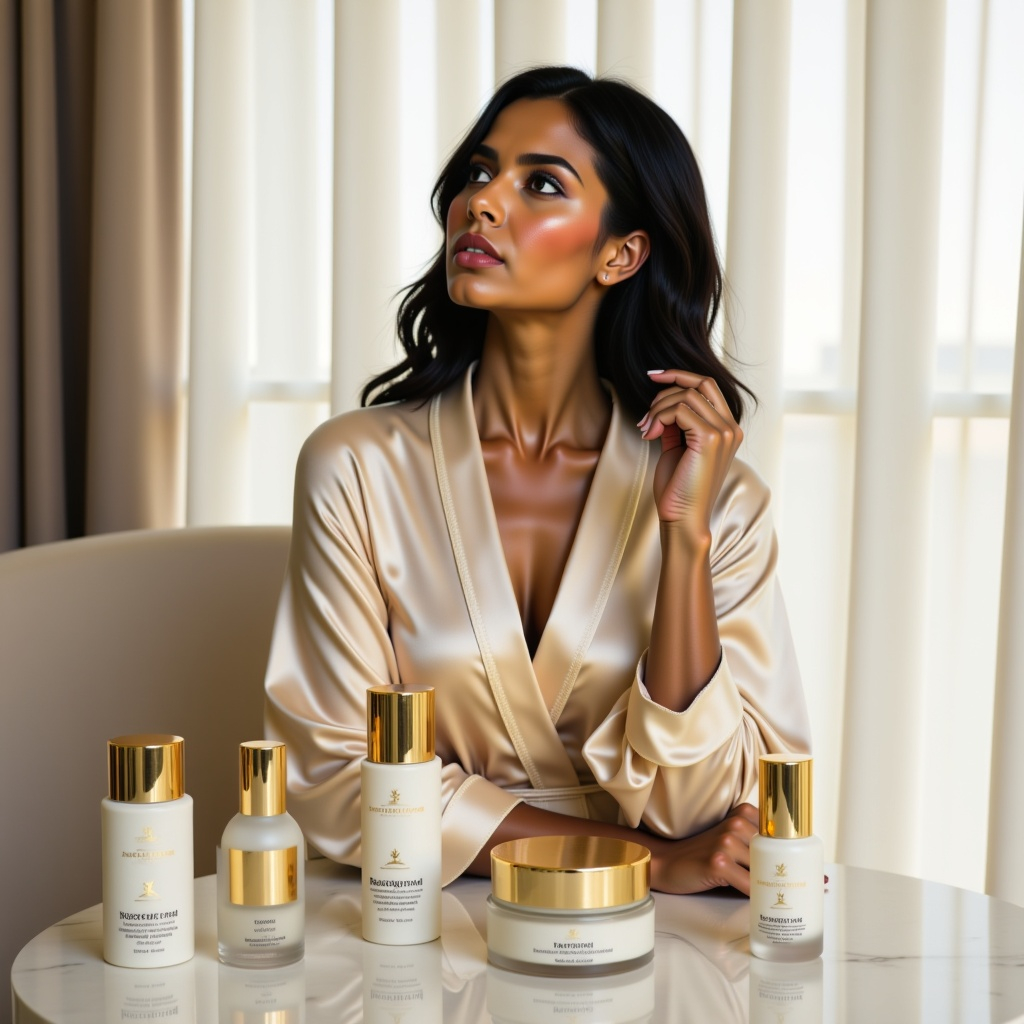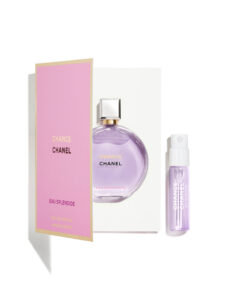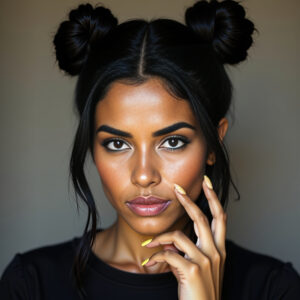Table of Contents
This guide how to start a beauty business, will walk you through every step to turn your idea into a thriving online venture. The beauty industry is booming, and there’s never been a better time to dive in. With the natural and organic segment valued at $37 billion in 2022 and projected to double by 2032, the opportunities are immense. Whether you’re passionate about skincare, makeup, or haircare,

Starting a successful beauty business requires more than just a great product. It’s about understanding your audience, building a strong brand, and leveraging the right strategies. This guide simplifies the process, breaking it into actionable steps that anyone can follow.
From conducting thorough research to creating a solid plan, we’ll help you navigate the journey with confidence. Let’s explore how you can transform your passion into a profitable online business.
Key Takeaways
- The natural and organic beauty market is growing rapidly, offering significant opportunities.
- Research is essential to understand your audience and competition.
- A clear brand identity helps your business stand out in a crowded market.
- This guide provides step-by-step instructions to simplify the process.
- Success requires a combination of passion, planning, and persistence.
Embracing the Beauty Entrepreneur Mindset
Success in the beauty world begins with a mindset focused on growth and purpose. Whether you’re launching a new line or expanding your reach, your approach will determine your trajectory. A positive, growth-oriented mindset is essential for navigating challenges and seizing opportunities.
Cultivating a Growth Mindset
A growth mindset is the belief that abilities and intelligence can be developed through dedication and hard work. In the beauty industry, this means embracing challenges as opportunities to learn and improve. Self-belief and personal development are key to overcoming obstacles and staying resilient.
Here are some actionable steps to cultivate a growth mindset:
- Set clear goals and celebrate small wins.
- Learn from failures and adapt your strategies.
- Seek feedback and continuously improve your skills.
Building Your Vision and Purpose
Defining your vision and purpose is the foundation of a strong brand. It’s not just about selling products—it’s about creating value and meeting the needs of your audience. A clear vision helps you stay focused and inspires others to support your journey.
Successful beauty entrepreneurs like Fenty Beauty’s Rihanna and Glossier’s Emily Weiss prioritized their vision from the start. They understood their audience’s needs and built brands that resonated deeply.
“Your vision will guide every decision you make, from product development to marketing strategies.”
Here’s a quick comparison of how vision and purpose drive success:
| Element | Role in Success |
|---|---|
| Vision | Provides direction and inspires innovation. |
| Purpose | Builds emotional connections with your audience. |
| Clear Ideas | Ensures consistency and clarity in your approach. |
By focusing on your vision and purpose, you’ll create a brand that stands out in a crowded market. Remember, the journey is as important as the destination. Stay passionate, stay resilient, and trust your vision.
Developing a Memorable Brand Identity
Your brand identity is more than just a logo—it’s the heart of your business. It’s the way customers perceive you, the emotions they associate with your products, and the story you tell. In the competitive beauty industry, a strong brand identity can set you apart and create lasting connections with your audience.

Crafting Your Logo, Packaging, and Aesthetic
A logo is often the first thing people notice about your brand. It should be simple, memorable, and reflective of your values. Think of Glossier’s minimalist pink logo or Fenty Beauty’s bold, edgy design. These logos instantly communicate the essence of their brands.
Packaging is equally important. It’s not just about protecting your products—it’s about creating an experience. Sustainable, elegant, or innovative packaging can leave a lasting impression. For example, indie brands like Herbivore Botanicals use eco-friendly materials to align with their natural ethos.
Your aesthetic should be consistent across all touchpoints, from your website to social media. This creates a cohesive experience that reinforces your brand’s message.
Creating an Emotional Brand Story
Every successful beauty brand has a story that resonates with its audience. Your story should be authentic, relatable, and inspiring. It’s not just about what you sell—it’s about why you do it.
Take Kylie Cosmetics, for example. The brand’s story revolves around Kylie Jenner’s personal journey with makeup, making it relatable to millions of fans. Similarly, Drunk Elephant focuses on clean, effective skincare, appealing to health-conscious consumers.
Here’s how to craft a compelling brand story:
- Identify your core values and mission.
- Highlight the problem your products solve.
- Share your journey and passion.
By weaving these elements together, you’ll create a narrative that connects emotionally with your audience, fostering loyalty and trust.
Understanding the Beauty Industry Landscape
Navigating the beauty industry requires a deep understanding of its ever-changing landscape. Staying informed about trends and competitors is essential for building a successful brand. Let’s explore how to analyze the market and position your business strategically.
Market Trends and Competitor Analysis
The beauty sector is evolving rapidly, with new trends emerging every year. From clean beauty to personalized skincare, consumer preferences are shifting. Understanding these trends helps you align your offerings with market demands.
Competitor analysis is equally important. By studying your competitors, you can identify gaps in the market and refine your strategies. Here’s how to get started:
- Analyze competitors’ product lines and pricing.
- Monitor their marketing campaigns and customer engagement.
- Identify their strengths and weaknesses to find opportunities.
Conducting thorough market research is the foundation of a strong business model. It helps you understand your audience, anticipate trends, and make informed decisions. Here are some actionable tips:
- Use surveys and focus groups to gather consumer insights.
- Analyze industry reports and data to identify growth areas.
- Stay updated on global trends to adapt your strategies.
In a crowded market, finding a niche can set your brand apart. Whether it’s eco-friendly packaging or innovative formulations, niche opportunities allow you to cater to specific consumer needs. Here’s a quick overview of key trends shaping the industry:
| Trend | Impact |
|---|---|
| Clean Beauty | Growing demand for natural and non-toxic products. |
| Personalization | Consumers seek tailored skincare and makeup solutions. |
| Sustainability | Eco-friendly practices are becoming a priority. |
| Digital Engagement | Social media and e-commerce drive brand visibility. |
By staying informed and adapting to these trends, you can position your brand for long-term success. Remember, the beauty industry is dynamic—continuous learning and flexibility are key.
Plan Your Business Model & Manufacturing Strategy
Building a successful beauty venture starts with a solid foundation in your business model and manufacturing strategy. These elements determine how your brand operates, scales, and meets customer expectations. Let’s explore how to make the right choices for your business.

Selecting the Right Business Model
Your business model defines how you create, deliver, and capture value. It’s the blueprint for your operations and growth. There are several models to consider, each with its own advantages.
For example, direct-to-consumer (DTC) models allow you to sell directly to customers, cutting out middlemen. This approach gives you full control over branding and customer relationships. On the other hand, wholesale partnerships can help you reach a broader audience through established retailers.
Here’s a quick comparison of popular business models:
| Model | Benefits |
|---|---|
| Direct-to-Consumer | Higher profit margins, direct customer feedback. |
| Wholesale | Broader reach, established distribution channels. |
| Subscription | Recurring revenue, customer loyalty. |
Choose a model that aligns with your goals, resources, and target audience. Remember, flexibility is key as your business evolves.
Choosing a Manufacturing Approach
Your manufacturing process impacts product quality, scalability, and costs. Whether you opt for in-house production or outsourcing, each approach has its pros and cons.
In-house manufacturing gives you complete control over quality and timelines. However, it requires significant investment in equipment and expertise. Outsourcing to established labs, on the other hand, can save time and resources while ensuring professional results.
Indie brands like Glossier and Fenty Beauty have successfully outsourced production to meet high demand without compromising quality. Here’s how to decide which approach works for you:
- Assess your budget and resources.
- Evaluate your production volume and scalability needs.
- Research potential partners for outsourcing.
By carefully planning your manufacturing strategy, you can ensure consistent quality and efficient operations. This sets the stage for long-term success in the competitive beauty industry.
Sorting Out Finances for Your Startup
Effective financial planning is the backbone of any successful beauty startup. From budgeting for ingredients to managing labor costs, every detail matters. A well-structured financial strategy ensures your brand stays profitable while delivering high-quality products.
Budgeting for Product Development
Creating a detailed budget is the first step in product development. Start by evaluating the costs of ingredients, packaging, and labor. For example, brands like Glossier prioritize cost-effective yet premium materials to balance quality and affordability.
Here’s how to break down your budget:
- Research suppliers for competitive pricing on ingredients.
- Factor in packaging design and production expenses.
- Allocate funds for testing and quality control.
Tracking time and expenses throughout the process helps avoid overspending. Use tools like spreadsheets or budgeting software to stay organized.
Establishing Pricing and Profit Strategies
Setting the right price for your products is crucial. It’s a balance between covering costs and remaining competitive. Consider factors like production expenses, market demand, and perceived value.
For instance, Fenty Beauty offers premium pricing while maintaining accessibility. Here are some strategies to guide your pricing:
- Calculate the total cost per unit, including ingredients and packaging.
- Research competitors to understand market rates.
- Add a profit margin that aligns with your brand positioning.
Effective financial planning prevents cash flow issues and ensures long-term sustainability. By staying proactive and informed, you can build a thriving business in the beauty industry.
Creating an Online Presence and Website
In today’s digital age, a strong online presence is essential for any cosmetics brand to thrive. Your website is more than just a digital storefront—it’s the face of your brand and the first impression for potential customers. A sleek, user-friendly design built on platforms like Squarespace or Shopify can set you apart in the competitive beauty market.

Building a User-Friendly Website
Your website should be intuitive, visually appealing, and easy to navigate. Start by selecting the right platform. Shopify is ideal for e-commerce, while Squarespace offers stunning templates for showcasing your cosmetics. Focus on these key elements:
- Mobile optimization: Over 70% of web traffic comes from mobile devices.
- Fast loading times: Slow sites frustrate users and hurt your search rankings.
- Clear calls-to-action: Guide visitors to shop, subscribe, or contact you.
Remember, your website reflects your brand’s identity. Keep it consistent with your logo, colors, and messaging.
Leveraging SEO and Digital Marketing
An effective marketing strategy integrates SEO and digital tools to drive traffic and engage customers. Start with keyword research to optimize your content for search engines. Tools like Google Analytics help track performance and identify areas for improvement.
Here’s how to maximize your online impact:
- Content marketing: Share blogs, tutorials, and product reviews to build trust.
- Social media integration: Link your platforms to your website for seamless engagement.
- Email campaigns: Keep your audience informed about new launches and promotions.
By leveraging these strategies, you can create a powerful online presence that drives growth for your beauty brand.
Start a Beauty Business
Standing out in the competitive cosmetics market begins with a clear focus on your niche. A well-defined niche helps your brand stand apart and meet the specific needs of your audience. Whether it’s clean skincare or bold makeup, carving out your unique space is essential for success.
Why a Niche Matters
Identifying a niche is vital for differentiating your beauty business from competitors. It allows you to focus on a specific audience, creating tailored products that resonate deeply. For example, brands like Glossier and Fenty Beauty succeeded by addressing unmet needs in the market.
Strategies for Defining Your Target Market
Understanding your target audience is the foundation of a successful brand. Start by researching their preferences, pain points, and buying habits. Here’s how to get started:
- Conduct surveys or focus groups to gather insights.
- Analyze competitors to identify gaps in the market.
- Create customer personas to guide your strategy.
Creating Tailored Products
Once you understand your audience, develop products that meet their specific needs. For instance, Drunk Elephant focuses on clean, effective skincare, while Kylie Cosmetics offers bold, trend-driven makeup. Tailoring your line ensures it resonates with your audience.
Positioning Your Brand as the Solution
Your brand should address your customers’ unique problems. Highlight how your products solve their pain points. Use clear messaging and storytelling to build emotional connections. For example, Fenty Beauty positioned itself as inclusive, offering shades for all skin tones.
Examples of Successful Niche Brands
Many beauty brands have thrived by focusing on a niche. Glossier caters to minimalists with its “skin-first, makeup-second” approach. Fenty Beauty revolutionized inclusivity in the industry. These examples show how a clear niche can drive success.
The Role of Clear Branding
Focused branding is crucial for standing out. Your brand identity should reflect your niche and resonate with your audience. Consistent messaging, visuals, and values build trust and loyalty. Remember, a strong brand is more than just a logo—it’s a promise to your customers.
By aligning your product line with a well-defined niche and target audience, you’ll create a brand that stands out in a crowded market. Stay focused, stay authentic, and trust your vision.
Designing Effective Retail and Sales Strategies
Crafting a winning retail and sales strategy is essential for scaling your beauty venture. Whether you’re selling directly to customers or partnering with retailers, your approach must align with your brand’s goals and audience. Let’s explore how to create a plan that maximizes visibility and drives sales.
Direct-to-Consumer vs. Retail Partnerships
Choosing between direct-to-consumer (DTC) and retail partnerships depends on your business objectives. DTC models give you full control over customer relationships and higher profit margins. However, they require significant investment in marketing and logistics.
Retail partnerships, on the other hand, offer broader reach through established distribution channels. Brands like Fenty Beauty have successfully balanced both models, leveraging DTC for exclusivity and retail for accessibility. Here’s a quick comparison:
- DTC: Higher control, direct feedback, and better margins.
- Retail: Wider audience, reduced marketing burden, and faster scaling.
Maximizing Social Media Channels
Social media is a powerful tool for promoting your products and engaging with customers. Platforms like Instagram and TikTok are ideal for showcasing your brand’s personality and driving sales. Here’s how to make the most of them:
- Use visually appealing content to highlight your products.
- Engage with followers through comments, polls, and stories.
- Collaborate with influencers to expand your reach.
For example, Glossier built its brand by fostering a community on social media. Their authentic approach resonates with customers, driving both loyalty and sales.
By combining a strong retail strategy with effective social media efforts, you can create a seamless experience for your customers. Stay agile, stay data-driven, and watch your business grow.
Developing a Robust PR, Marketing, and Sales Plan
A strong PR and marketing plan is the backbone of any thriving cosmetics venture. It’s not just about promoting your products—it’s about building a brand that resonates with your audience. A well-crafted strategy ensures sustained growth and long-term success.
Creating a Comprehensive Marketing Calendar
A detailed marketing calendar keeps your campaigns organized and on track. Start by mapping out key dates, such as product launches, holidays, and seasonal trends. This helps you plan content, promotions, and outreach effectively.
Here’s how to build a winning calendar:
- Set clear goals for each campaign.
- Allocate resources for content creation and media placement.
- Track performance metrics to refine your strategies.
Engaging Influencers and Media Outreach
Influencers and media partnerships can amplify your brand’s reach. Collaborate with creators who align with your values and audience. For example, Fenty Beauty leveraged influencer partnerships to build buzz around its inclusive products.
Here are some actionable steps:
- Identify influencers with engaged followings.
- Pitch your brand to relevant media outlets.
- Measure the impact of collaborations to optimize future efforts.
Balancing traditional media with digital marketing ensures a well-rounded approach. Use data-driven insights to iterate and improve your strategies. By aligning your efforts with customer engagement, you’ll drive sales and build lasting relationships.
Researching Market Trends and Competitor Strategies
Staying ahead in the competitive beauty industry requires constant vigilance and adaptability. The market is always evolving, and understanding these changes is key to keeping your brand relevant. Continuous research helps you anticipate shifts, identify opportunities, and refine your strategies.
Why Continuous Market Research Matters
Market research is not a one-time task—it’s an ongoing process. By monitoring trends and consumer behavior, you can adapt your business to meet changing demands. For example, the rise of clean beauty and sustainability has reshaped the industry, and brands that ignored these trends lost their place in the market.
Here’s how to stay informed:
- Analyze industry reports and data regularly.
- Track consumer preferences through surveys and focus groups.
- Stay updated on global trends to anticipate shifts.
Learning from Competitor Strategies
Competitor analysis is a powerful tool for identifying gaps and opportunities. By studying other brands, you can learn what works and what doesn’t. For instance, Glossier and Fenty Beauty succeeded by addressing unmet needs in the market.
Here’s how to analyze competitors effectively:
- Evaluate their product lines, pricing, and marketing strategies.
- Identify their strengths and weaknesses to find opportunities.
- Monitor their customer engagement and feedback.
Indie Beauty Success Stories
Indie beauty brands often lead the way with innovative ideas and strategies. For example, Drunk Elephant focused on clean, effective skincare, while Kylie Cosmetics leveraged social media to build a loyal following. These success stories offer valuable lessons for your business.
Here are key takeaways from indie brands:
- Focus on a specific niche to stand out.
- Build a strong emotional connection with your audience.
- Leverage digital platforms for marketing and engagement.
Key Metrics and Benchmarks
To stay ahead, track key metrics that reflect your brand’s performance. These include sales growth, customer retention, and social media engagement. Here’s a quick overview of essential benchmarks:
| Metric | Why It Matters |
|---|---|
| Sales Growth | Indicates your business’s overall performance. |
| Customer Retention | Shows how well you’re meeting customer needs. |
| Social Media Engagement | Reflects your brand’s visibility and appeal. |
By staying informed and proactive, you can position your brand for long-term success. Remember, the beauty industry rewards those who adapt and innovate. Keep learning, keep growing, and watch your business thrive.
Conclusion
Building a trusted cosmetics brand is a process that demands focus and dedication. This guide has walked you through essential steps—from cultivating the right mindset to understanding market trends and crafting a solid business model. Each part of the journey plays a crucial role in shaping your success.
Remember, combining thorough research with a strong digital presence is key. Stay updated with the latest information and adapt your strategies as needed. Proper planning, from finances to marketing, ensures your brand stands out in the competitive beauty industry.
Take the first step today. Use this guide as your roadmap, and trust your vision. With persistence and the right approach, you can turn your passion into a thriving business. Your journey begins now—embrace it with confidence!




